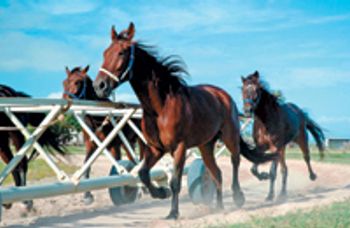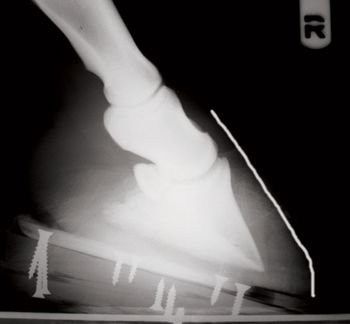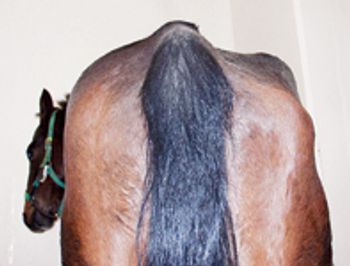
This is question 3 in "BizQuiz: Working with overeager horse owners."

This is question 3 in "BizQuiz: Working with overeager horse owners."

Madison, Wis. - Twenty-five cases of eastern equine encephalitis (EEE) have been documented in Wisconsin since late August and the number of confirmed cases is expected to grow.

Evidence-based medicine calls into question whether this disorder truly exists.

Albany, N.Y. - New York Senator Thomas Duane says he intends to introduce legislation calling for a statewide ban on the use of furosemide for any horse participating in a state-sanctioned horse race.

The guidelines were develop to promote medical practices that place emphasis on the health, safety and welfare of performance horses.

A fatal injury of a racehorse during training has some questioning the racetrack's responsibility in maintaining a veterinarian on call even during non-racing events.

The mathematical needs of lower grades of laminitis.

This field of science tries to encompass all potential causes, not just one principal one

National Report - Two outbreaks of equine herpesvirus (EHV-1) were contained after surfacing in California and Tennessee.

Davis, Calif. - In a first study of its kind, veterinarians across the country reported on the prevalance of certain common pathogens among the equine population.

Early identification is key in this widespread neurologic disease.

Denver - A partnership between the Colorado Horse Development Authority (CHDA) and the Morris Animal Foundation could result in a fertility vaccine meant to control the population of wild horses.

Most valvular diseases of horses are regurgitant, rather than stenotic.

Primary cardiovascular disease is relatively uncommon in horses.

Ultrasound is an extremely useful tool to aid in diagnosis and treatment of a wide variety of diseases in equine medicine.

Bacterial endocarditis is fairly uncommon in horses and is primarily thought to be secondary to bacteremia or thrombophlebitis.

Equine metabolic syndrome (EMS) is a term used to describe horses that manifest a cluster of problems, including obesity, regional adiposity, insulin resistance, and susceptibility to laminitis.

The pituitary gland plays an important role in many bodily functions.

Thyroid hormones are important for growth, maturation of organ systems, and regulation of metabolism.

Geriatric horses are the fastest growing segment of the equine population, and represent an increasing percentage of all equine patients seen by veterinarians and referred to specialty hospitals.

The term endocrinologic laminitis was coined by Dr. Phil Johnson and colleagues in 2004, and is meant to describe laminitis that arises from hormonal abnormalities primarily insulin resistance rather than inflammatory or mechanical causes.

Prevention of EMS centers on maintaining normal weight in horses, particularly those that are high risk breeds.

Nonsteroidal anti inflammatory drugs, particularly phenylbutazone and flunixin meglumine, have been the primary analgesics used in equine medicine for decades.

The official definition of an adverse drug reaction is any response to a drug which is noxious and unintended and which occurs at doses of an appropriately given drug used for the prophylaxis, diagnosis, or therapy, excluding therapeutic failures and occurring within a reasonable time frame of administration of the drug.

Lawsonia intracellularis is the causative agent of equine proliferative enteropathy (EPE).